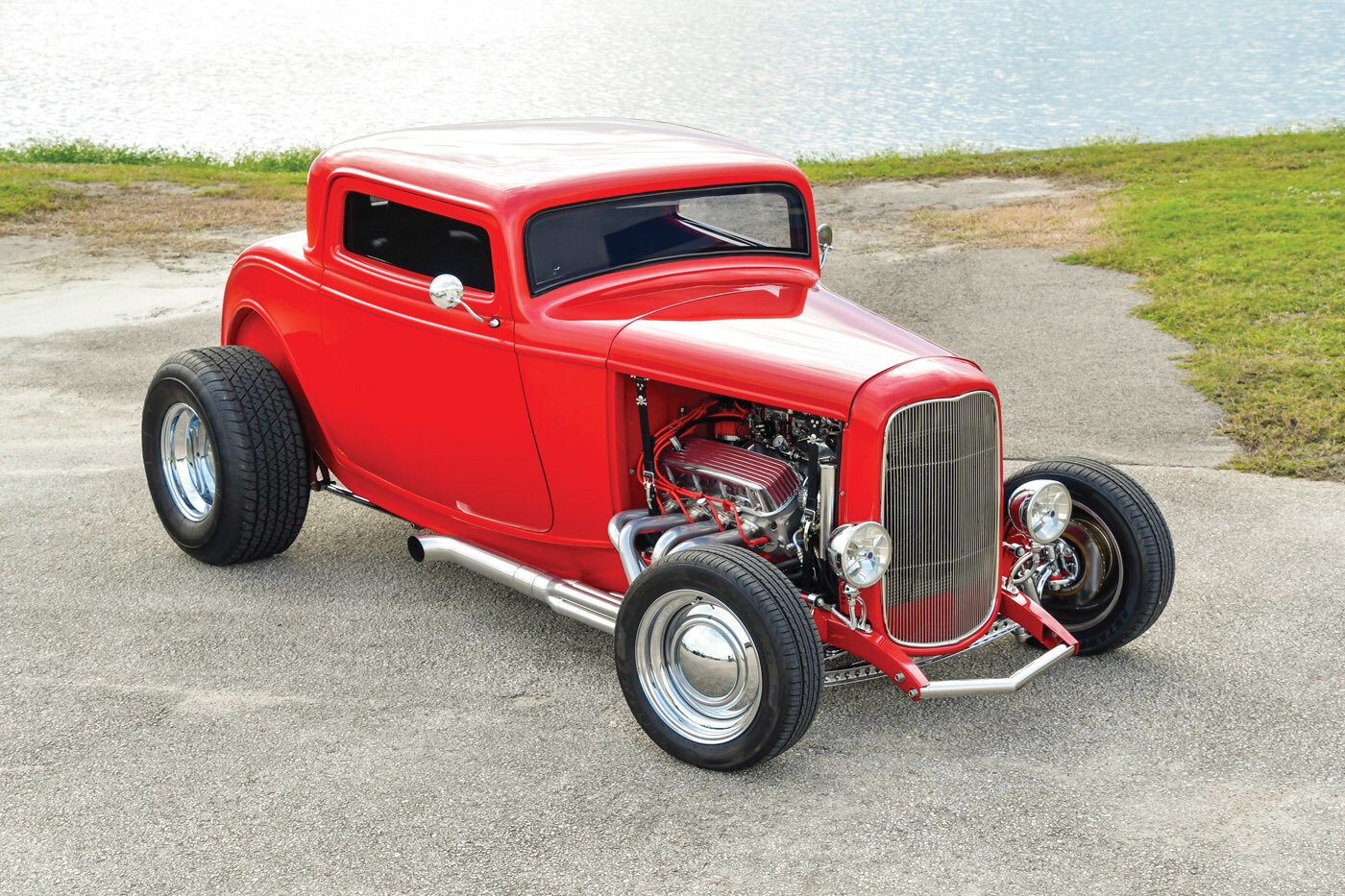
Brand new ’32 highboy from Fat Cat Rods
Story and Photos by Joe Greeves
My, how times have changed. When the ’32 Ford came out with the first flathead V8, the 221 ci engine was rated at a measly 65 hp. Granted, it was a big deal back then, but it’s hardly exciting by today’s standards. In contemporary reincarnations, it’s possible to get a clean-slate classic Ford, and a lot more power as well, as we’ll see in this ’32 Ford highboy from Fat Cat Rods.
Of course, the key element in the hot rod movement has always been stuffing a gnarly engine in what would otherwise be a discarded old car. Back in the ’50s, teenagers could buy cars from the ’30s with money made from odd jobs like mowing the neighbor’s lawn. They learned by doing hands-on hop-ups because, well, their money was coming from mowing lawns.
Today, however, good examples of original ’30s cars are hard to find, and the renovation of a steel survivor requires a serious financial commitment. Thanks to replica manufacturers, though, these icons from the past can still be built and enjoyed in the new millennium, and benefit from current engineering as well.
One such manufacturer dealing brand-new classic rides is Fat Cat Rods, located in Chatsworth, Georgia. Owner Steve Weber is a lifelong auto enthusiast who parlayed a small chassis fabrication operation in the family garage into a full-time business. Formalizing his sideline operation back in 2006, he combined top-quality products from distributors with custom work done in-house. Now, he and his son Kenton, along with a six-man staff, produce a range of vintage hot rods, available in almost any level of completion.
Customers can specify anything from a bare chassis to a drive-away hot rod, choosing from 1932, 1933, 1937 and 1940 Fords, as well as a ’41 Willys. Steve returns to his roots to start the process, fabricating a custom chassis with four-wheel disc brakes, a Ford 9-inch rear housing, high-performance rear axles, chromed coilovers and driveline mounts. If you choose a roller package, it includes your choice of front end, triangulated four-bar, custom K-member, and the body mounted and fitted. Customers can also choose several other options based on the intended power plant.
Fat Cat Rods fiberglass bodies are offered in several configurations including a Ford roadster, three-window coupe, five-window coupe, a Vicky and a ’41 Willys coupe. All bodies are reinforced with steel and wood and come with the trunk lid hung. Doors are fitted with safety latches and power windows as well. Customers can opt for an open-wheel look or select a full-fender package.
For the enthusiast with limited time, tools or talent, turnkeys are also available. Each one is built to exact specifications by an enthusiastic staff who boast more than 100 years of combined experience.
The three-window Ford highboy shown here is an example of the quality and style produced by the company. Promising just the right degree of hooliganism, the fiberglass ’32 Ford body has a built-in, 3-inch chop and a pronounced rake that reflects the flavor of ’50s vintage hot rods.
Steve’s sturdy chassis uses American Stamping Corp. frame rails, made to original specs and featuring a custom K-member. For this specific project, he added a triangulated four-bar control arms to suspend a John’s Industries 9-inch Ford rear, fitted with 3.23 gears and 31-spline axles. Up front, a Pete & Jakes Super Bell drilled I-beam chrome axle with hairpins and a Unisteer Performance Products rack keeps the ride on the straight and narrow.
All four wheels benefit from General Motors disc brakes for modern stopping power and QA1 coilovers in the rear keep cornering flat. An 18-gallon tank from Tanks Inc. was the final addition to make the chassis a roller. The 15-inch chrome smoothie wheels with fat rubber out back provide traditional hot-rod attitude.
Upgrades to the chassis and rear end were mindful in this car, as a 454 ci Chevrolet big-block is now stuffed between this rod’s frame rails. Under the finned air scoop is a Quick Fuel Technology 830 cfm four-barrel carburetor on a polished Edelbrock intake. Aluminum oval-port heads and a Howards hydraulic cam with roller lifters process the air-fuel mix, while an MSD Street Fire electronic ignition provides the spark. All told, this combination packs a 575 hp punch, which is sent to the rear by a TH350 automatic transmission.
As for creature comforts, Fat Cat Rods decked out the interior in classic style, beginning with high-back buckets and door panels swathed in gray and charcoal leather. A centrally mounted chrome gauge panel features a full complement of instruments from Dolphin Gauges. The controls and vents for the Vintage Air reside in a padded charcoal lower panel, along with the Kenwood head unit, speakers and multiple switches. The driver guides the steering system with a leather-wrapped billet steering wheel on a Lokar chrome tilt column.
Two-part urethane paint adds gloss that the original cars just can’t match. So the finishing touch before this rod rolled out the door was the bright PPG vermillion red paint with multiple coats of clear.
Rodders are fond of pointing out that modern vehicles with advanced technology just don’t excite people in the same way that the old classics can. So if you’re yearning for a blast from the past without the headaches of decades-old technology, or the pricey commitment to rejuvenate real steel, you can get the look of a vintage ride that’s precisely tailored to your needs. Just be sure to bolt in some serious horsepower and keep your foot on the pedal.

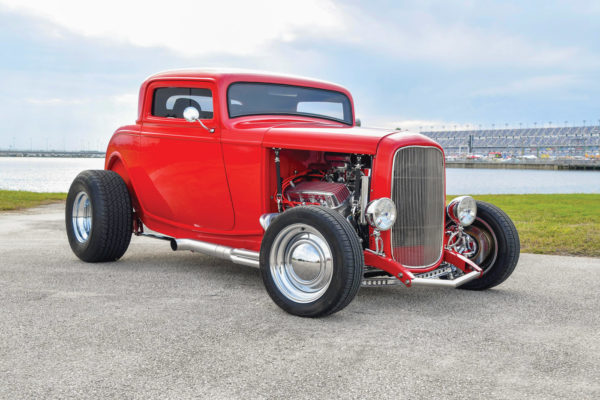
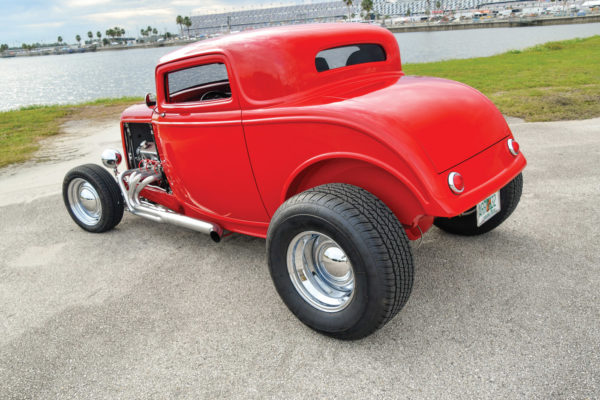
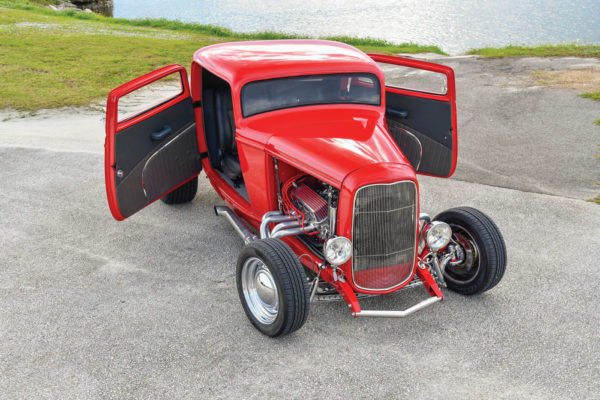
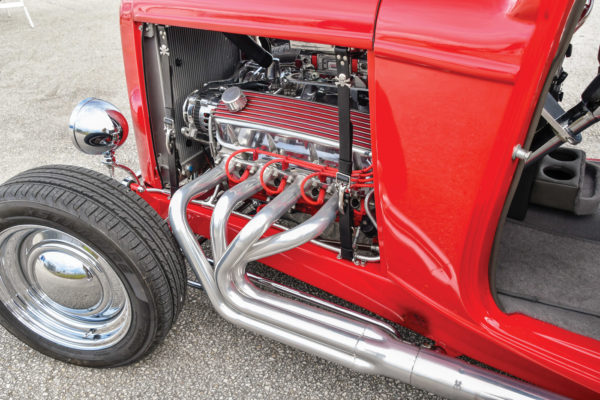
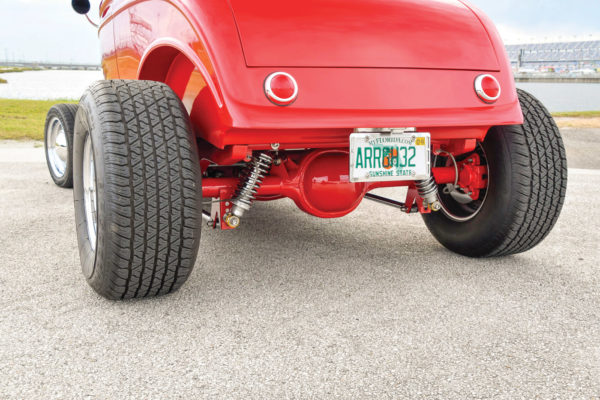
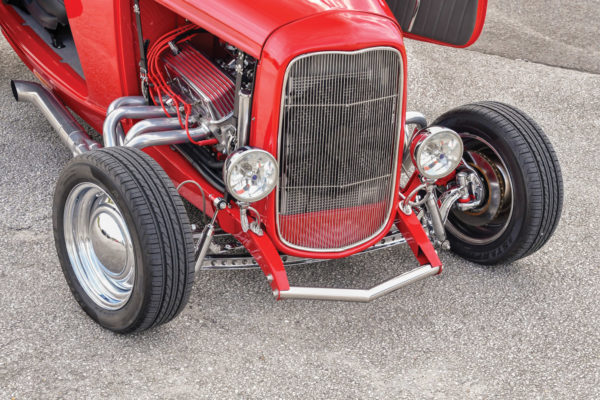
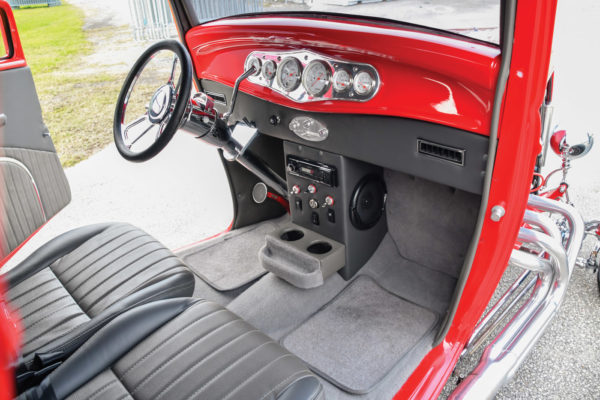
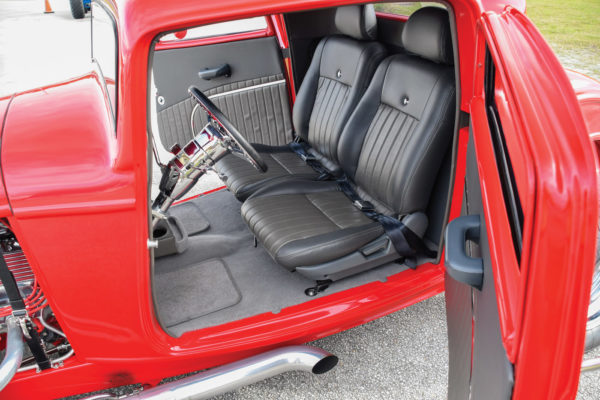
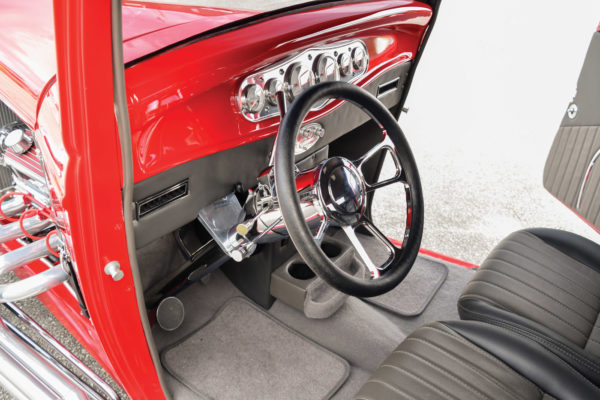
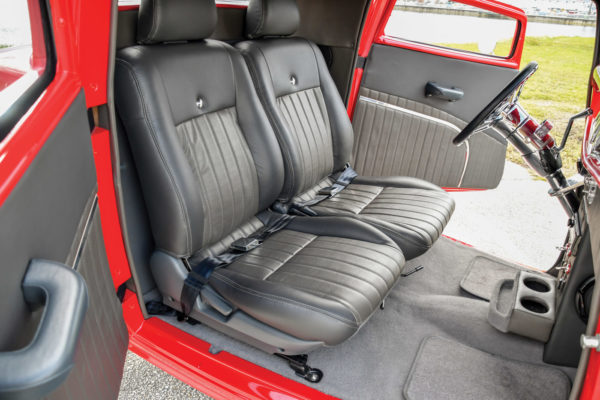
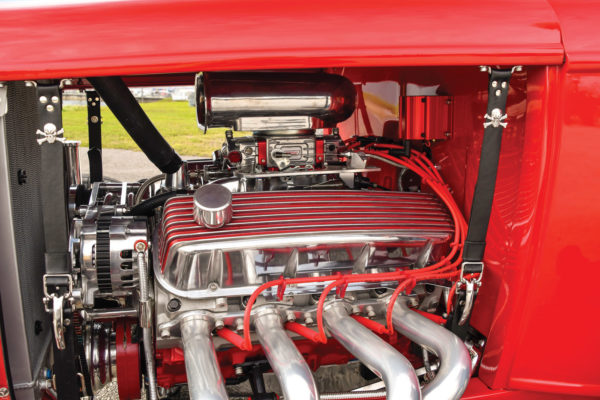
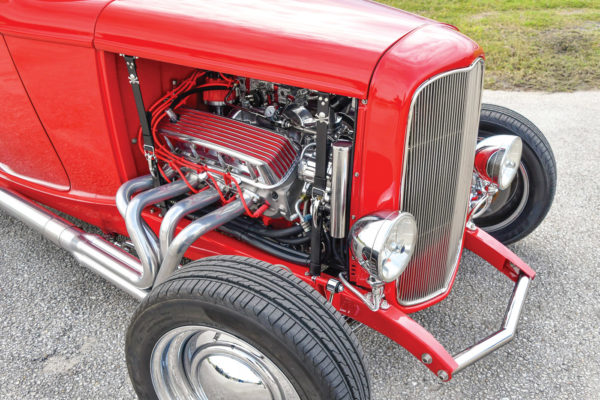
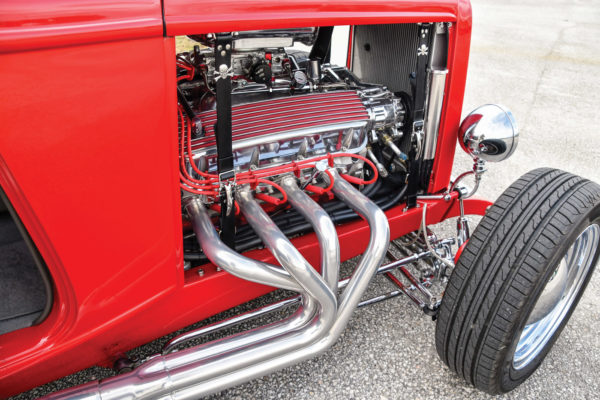
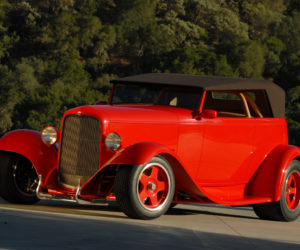
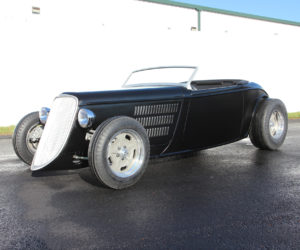
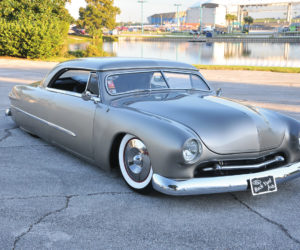
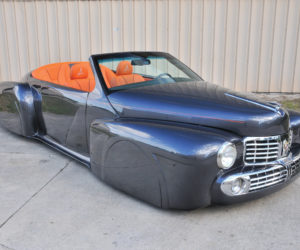
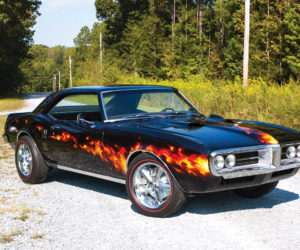
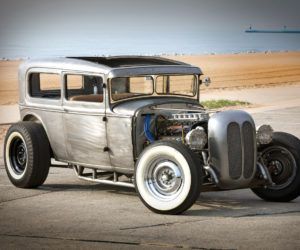




Comments for: Cat Scratch Fever
comments powered by Disqus